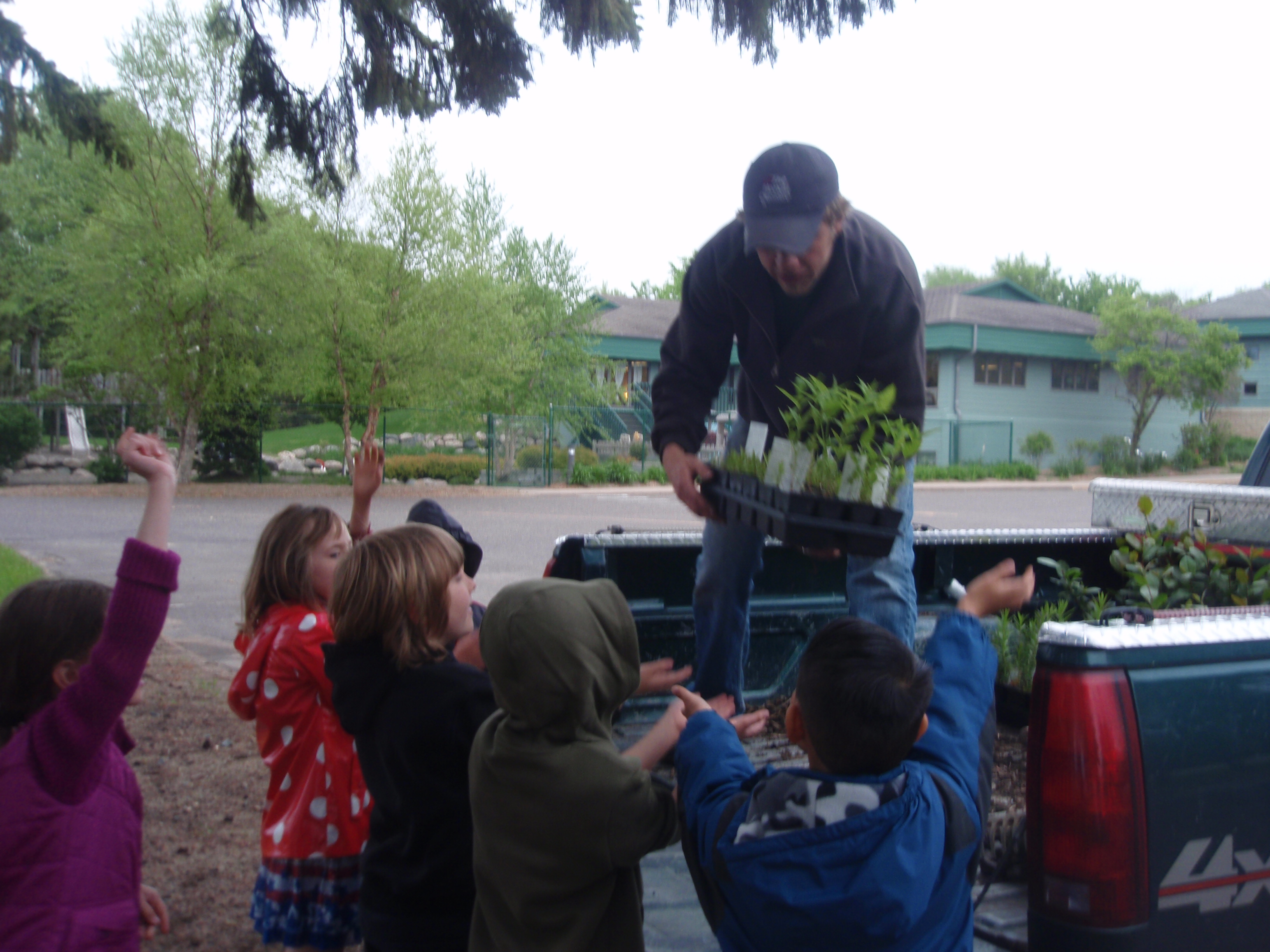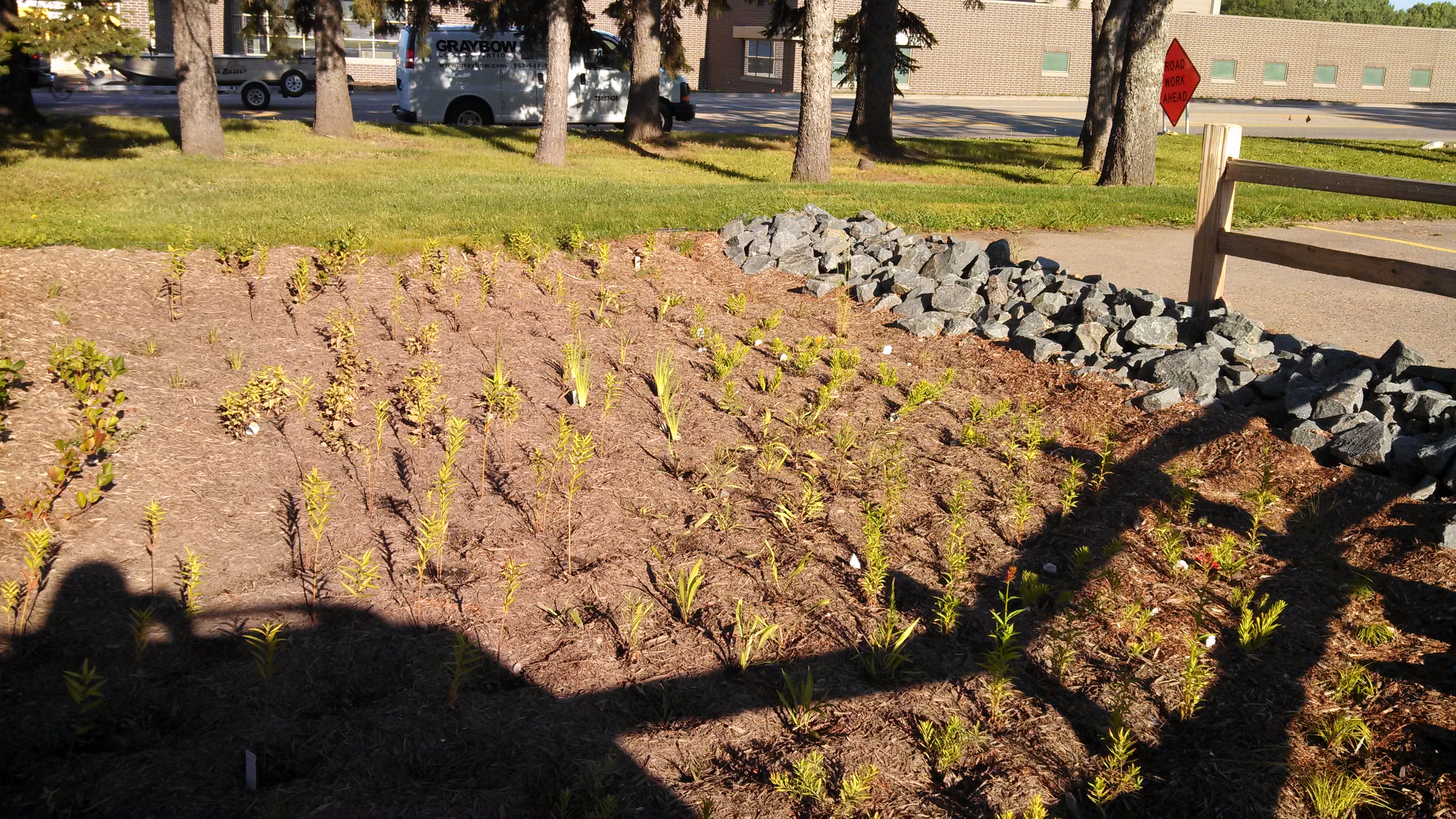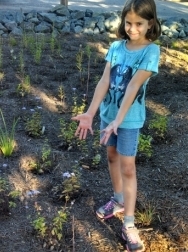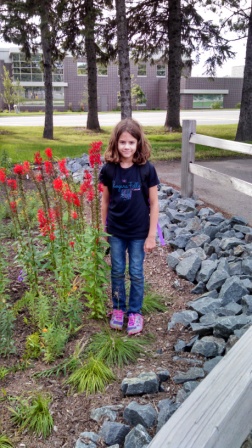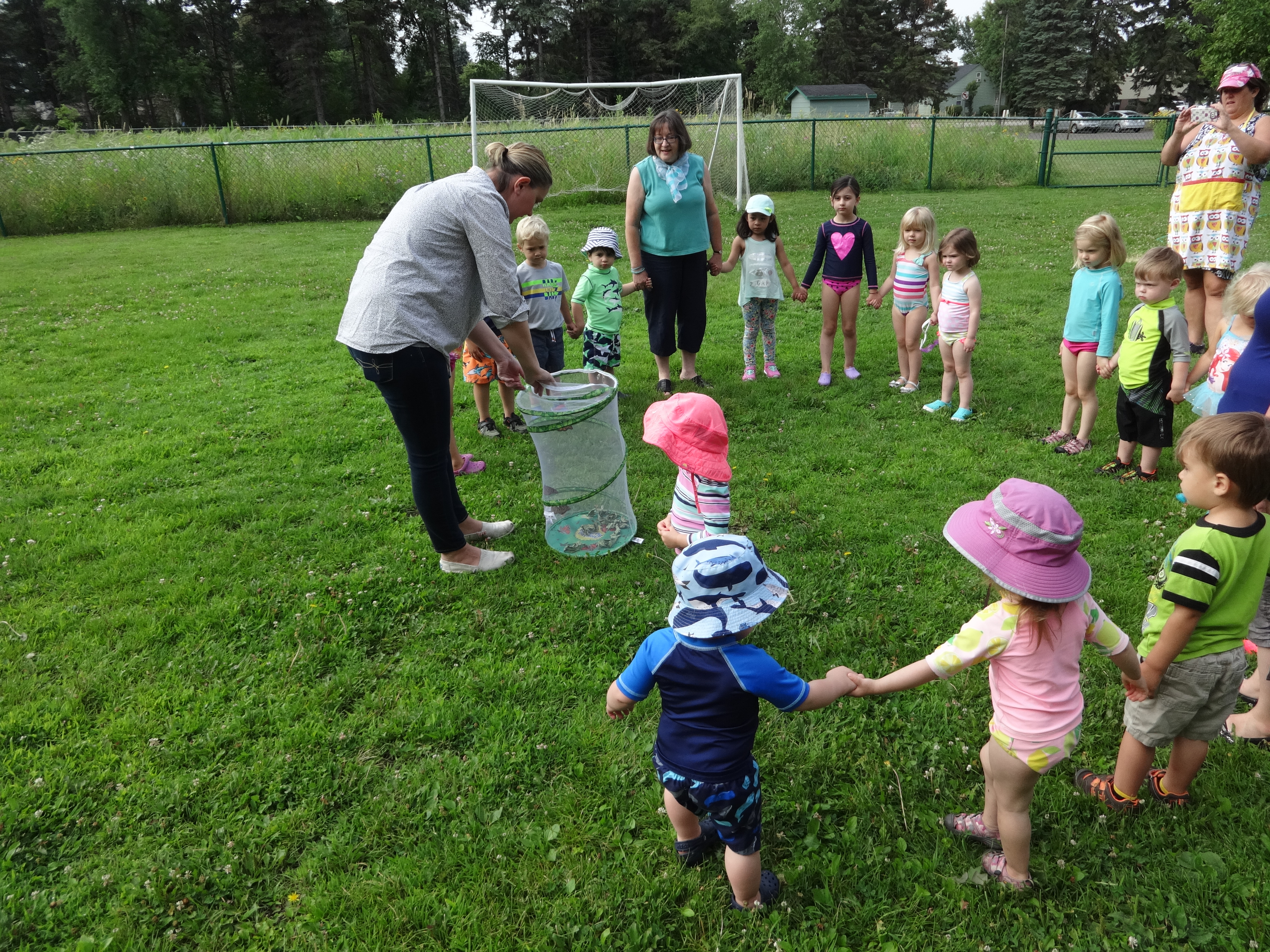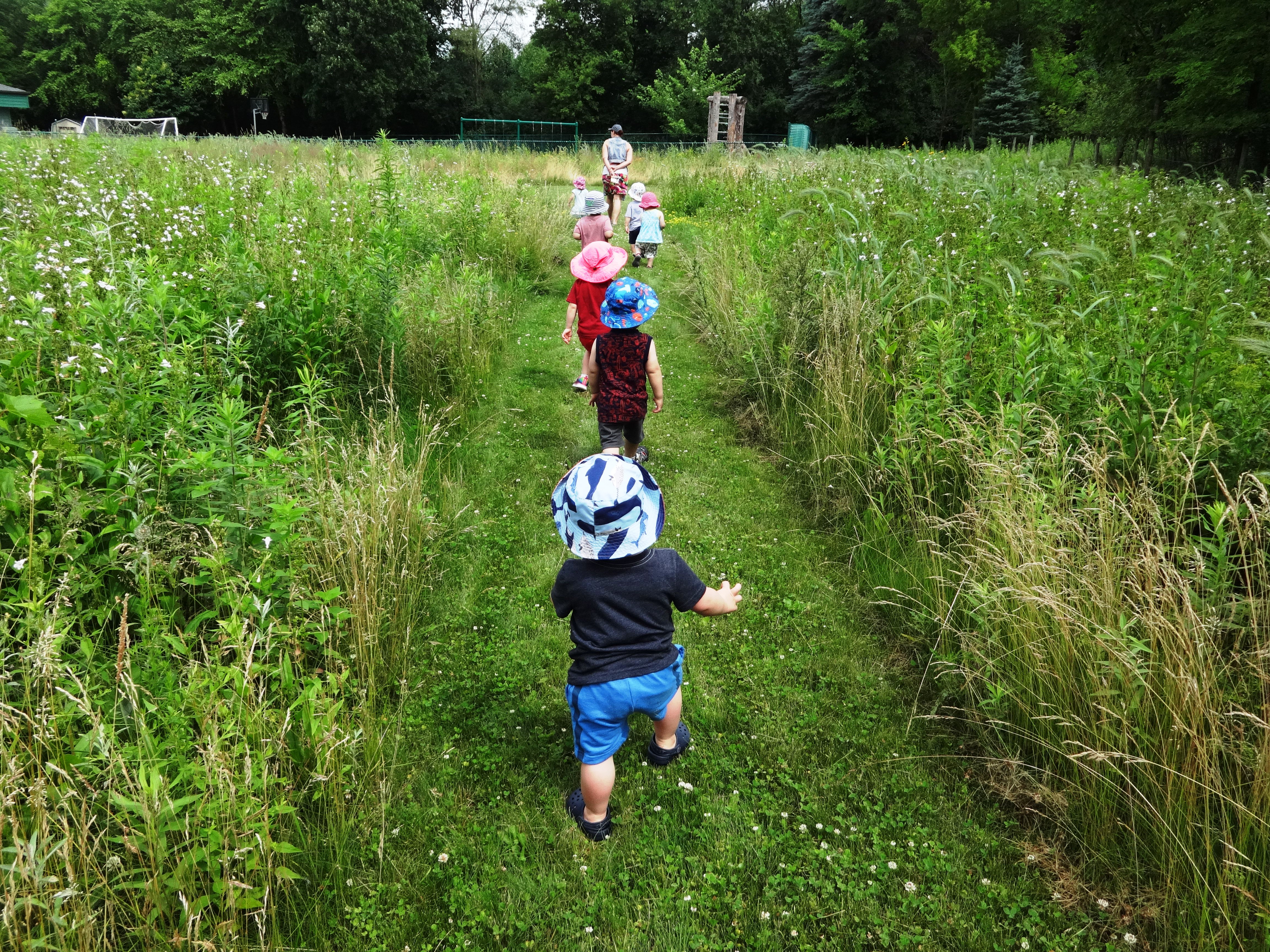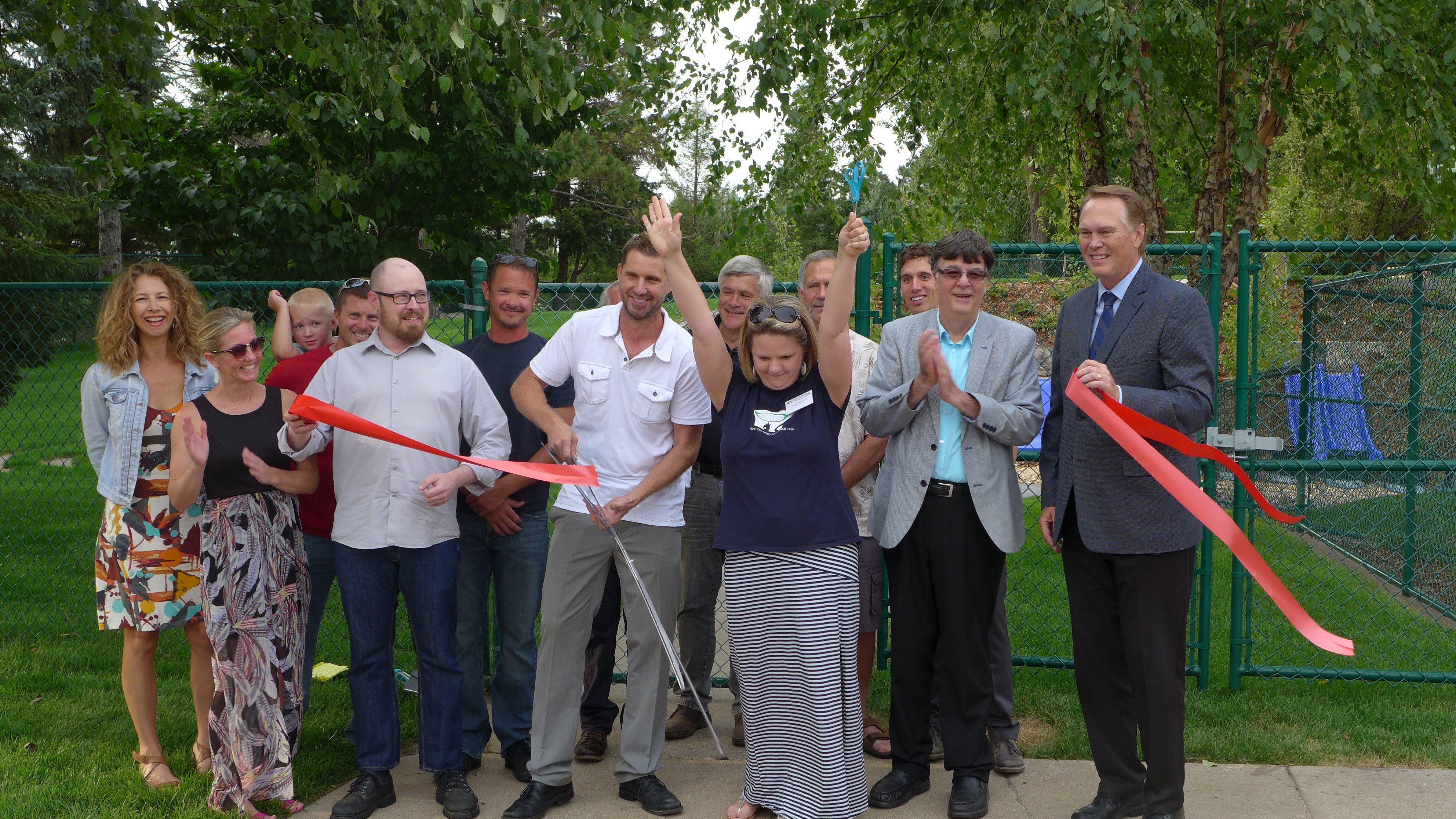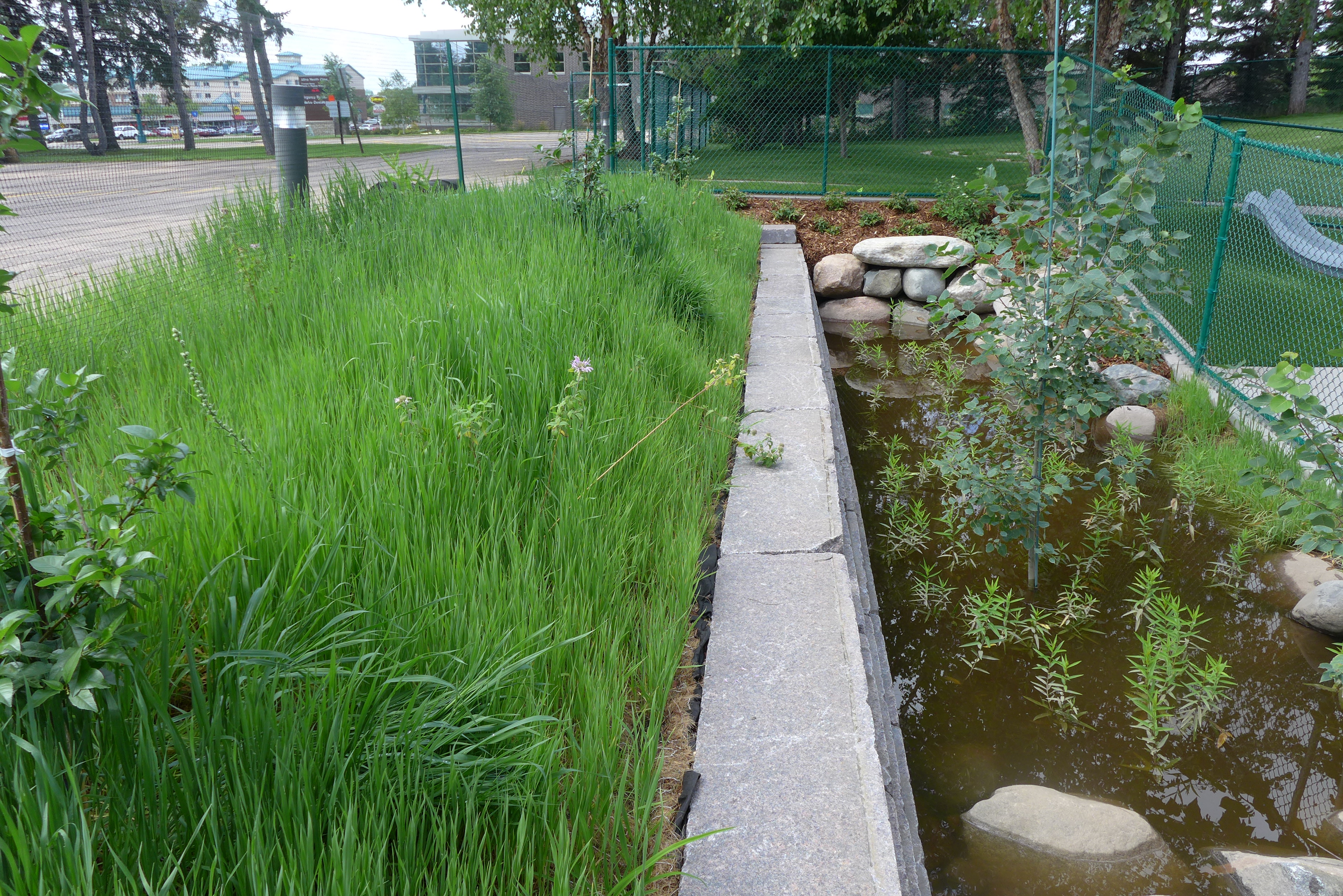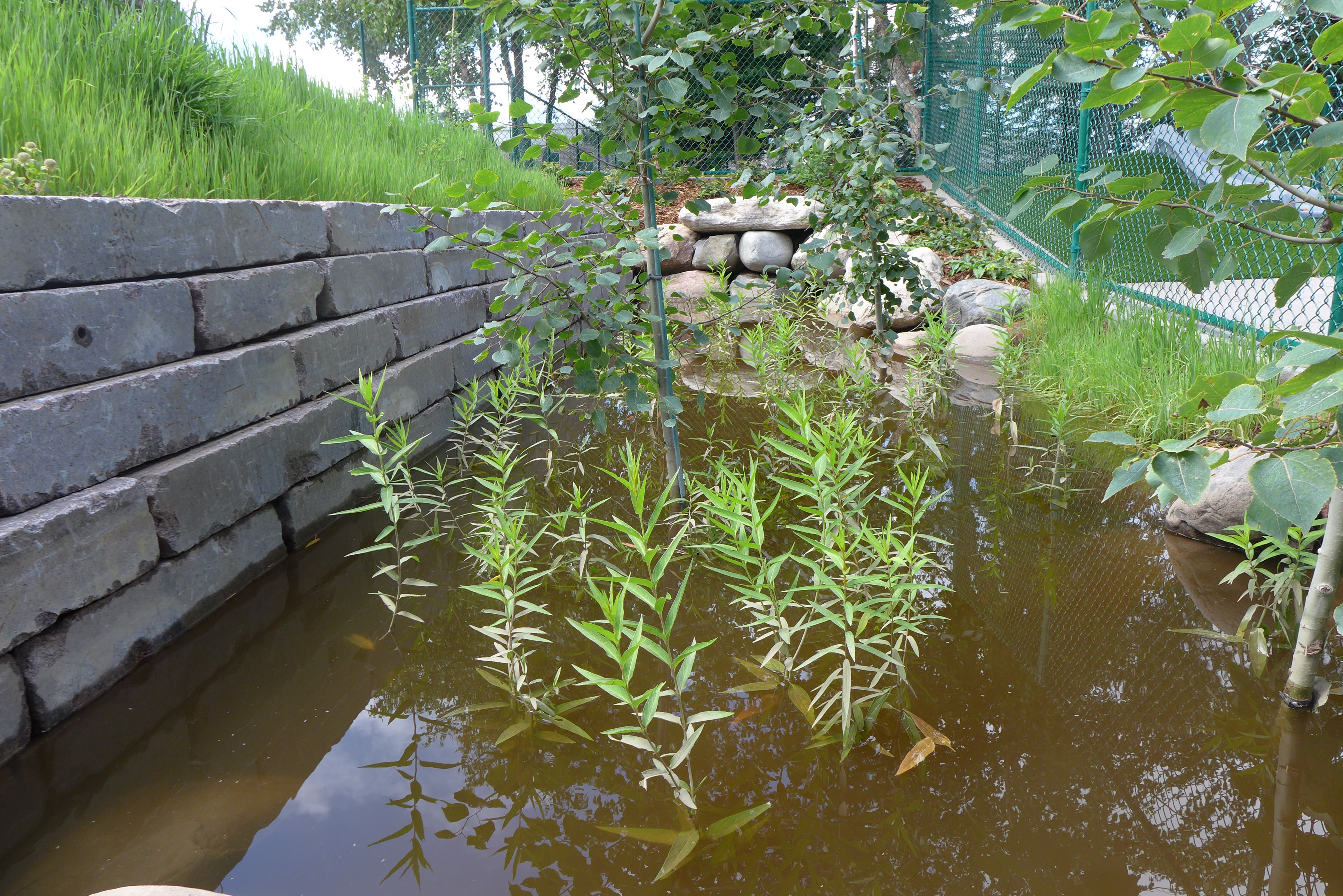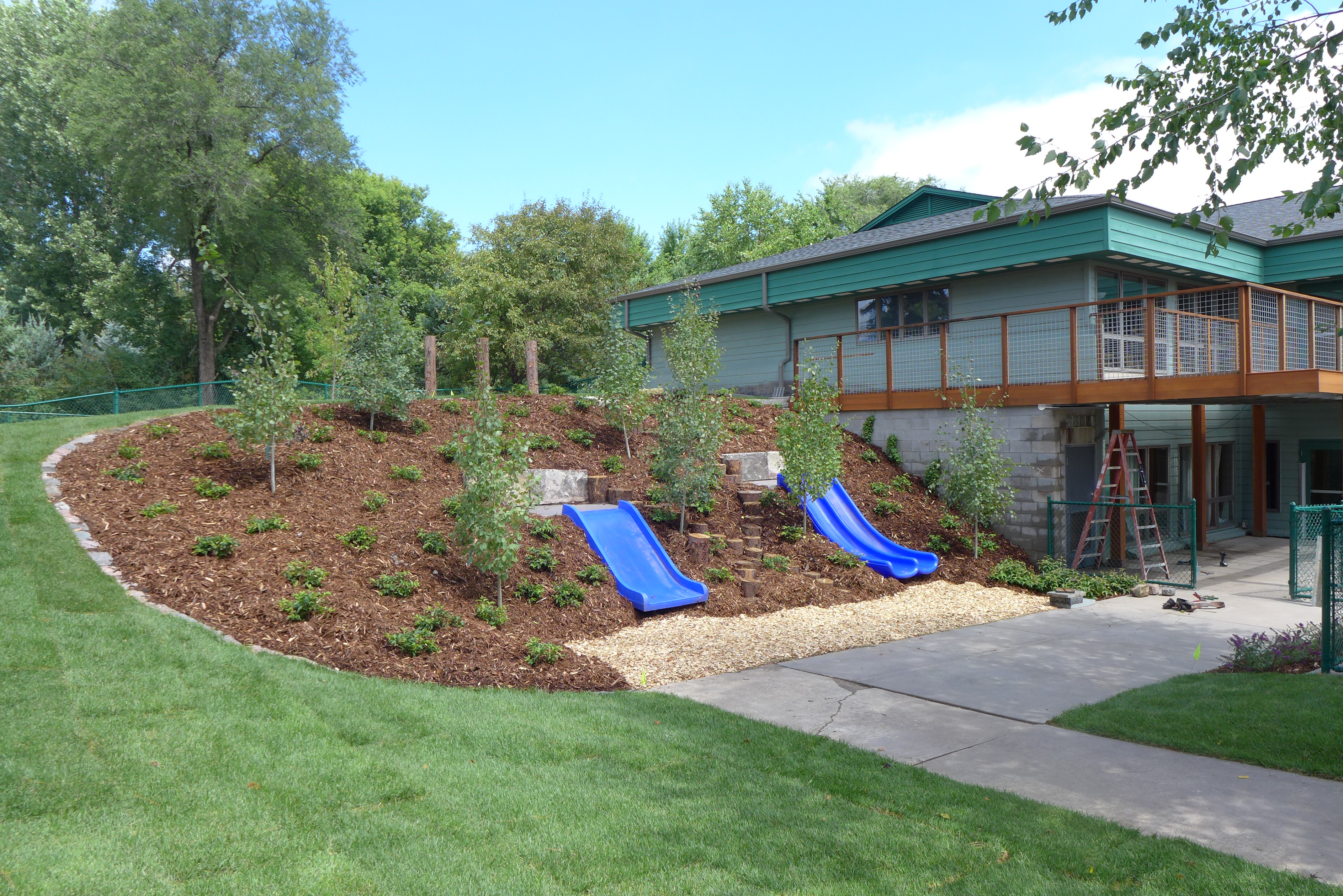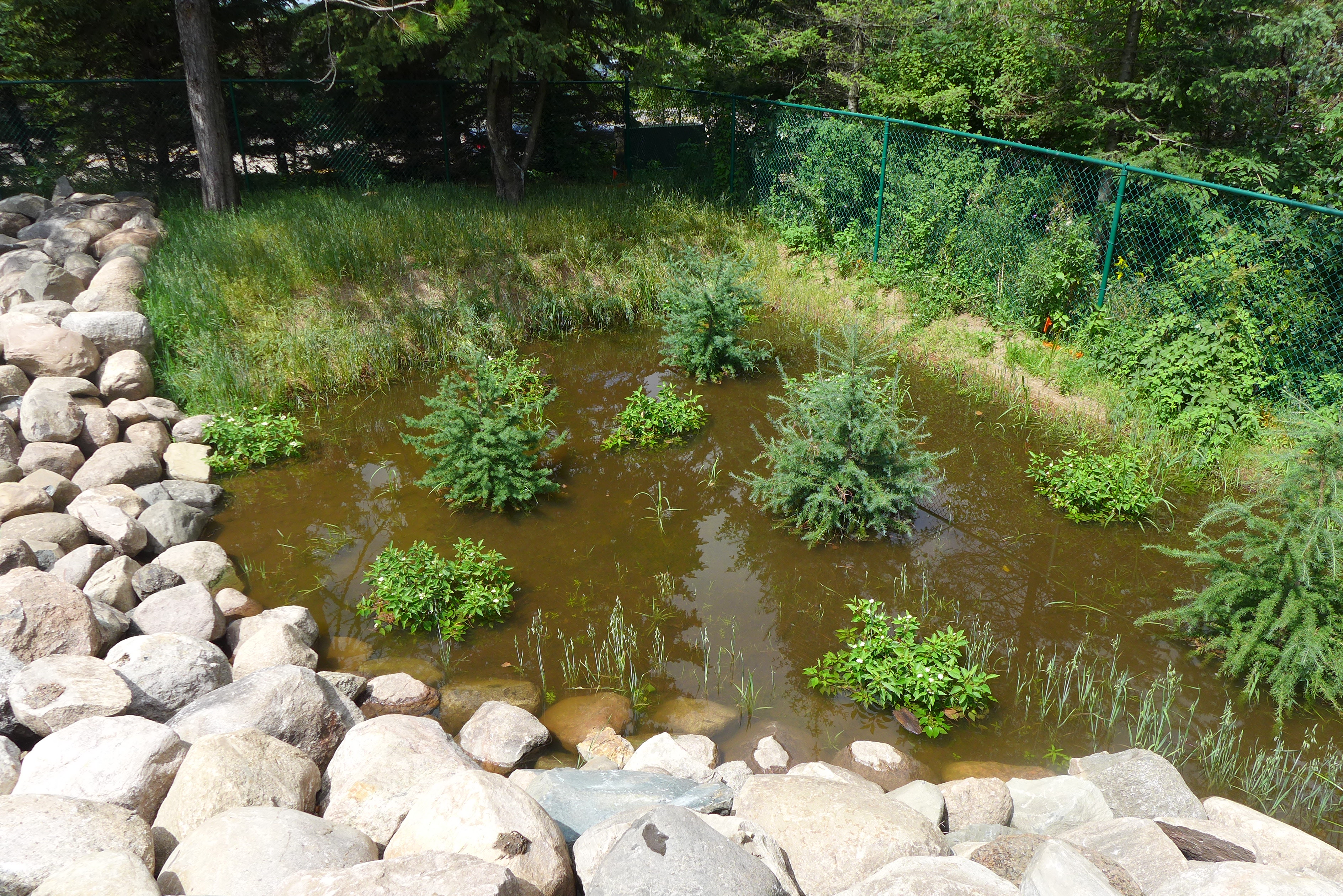Neighborhood Spotlight: White Bear Montessori
GEM LAKE—The White Bear Montessori School has gradually turned their property into a stormwater-cleaning, pollinator-attracting central. The series of projects have conveniently fit into the school’s needs and long-term plan for renovations. The effort started with one educational raingarden in 2013 and seeing its success, school staff kept this focus for projects later on. In 2015 the school installed their ‘Field of Dreams’, a large prairie complete with native plants and walking trails. With an open turf space already fenced off, the prairie adds variety to the schoolyard while holding water and soil on the landscape. As an added benefit, the prairie is a venue for students to learn about pollinators up close and in person. Most recently in 2016, the school undertook their largest project to date, which was two raingardens that collect stormwater runoff from the roof and parking lot.
The 2016 raingardens came at a great time for the school. The building had existing issues with water getting into the basement, and the playground needed to be replaced. Both of these needs opened up the possibility take a long-term approach and think creatively. As the process unfolded, VLAWMO’s cost-share program provided convenient and timely support to create a space that's both functional and aesthetically pleasing. The raingardens were easy to build since everything else was under construction, and they pay it forward for water resources. With so much water collected on-site and drained into groundwater, the raingardens improve the health of our watershed while reducing flooding issues in nearby streets and ditches.
Each project came from VLAWMO’s cost-share program and contracted with landscape designers for design and installation. In 2016 VLAWMO collaborated with the Ramsey Conservation District (now the Ramsey Soil and Water Conservation District) for additional funding.
Interview with Marnie McPherson, Head of School
What do you enjoy most about the raingardens and prairie planting?
The philosophy of Montessori education places a high value on getting children into nature. The raingardens and Field of Dreams (native planting) project support that philosophy. Additionally, they provide a physical space for enriching student learning and development.
We’re blessed to have a property that has been workable and flexible to accommodate these changes.
What’s the most challenging part about the cost-share projects?
Initially coordinating maintenance was the biggest challenge, as the school was worried about the raingardens and prairie becoming just another detail to keep up on. Thankfully though, this has shown not to be a burden to set-up. The school hires MN Native Landscapes for all upkeep needs, and they come out about four times/year. Parents also come out and volunteer periodically to help out.
What has surprised you as you’ve watched them grow?
The first raingarden is pretty mature, and it’s been fun to see it develop. The drainage problems are now resolved, and water no longer runs into the toddler room during big storms. The amount of water that’s spared from the stormdrain is surprising – how full they actually get and how quickly they drain!
How have the projects changed or enhanced student’s experience at the school?
Steve Massey, the landscape designer for the project, told a school staff member about the U of M’s Monarch Lab. She attended a class at the U as a result, which led to a variety of opportunities for student learning. Based on the Monarch Lab’s education tools, she brings eggs and caterpillars into the classroom and teaches students about the monarch life cycle as well as about the value of milkweed plants that sustain monarchs. The school is also now monitored as an official monarch monitoring station, and students conduct a monarch release each fall. This chain of events stemmed from the cost-share projects and it has been a joy for students, parents, and staff alike. The raingardens themselves are located in places where students don’t go (fenced off or on the far side of the lot), and many students are too young to work hands-on in a raingarden. So they provide enhanced scenic value for the schoolyard and serve a valuable function, but the monarch portion is what students interact with most. In this way the raingardens help provide more space and food sources to attract more monarchs to the school.
What tips would you provide other schools who are considering raingardens or similar stormwater best practices?
My advice for someone new to raingardens and native plantings would be to not be overwhelmed by the process. VLAWMO helped walk us through the application and planning process so that it wouldn’t be scary. Ramsey County Soil and Water Conservation helped as well.
I’d also advise not to start something that you can’t follow-up with, but it’s also probably not as much work as you think it would be. The whole thing turned out to be very reasonable for our school. For being a small community of families, a non-profit, and having a tight budget, it hasn’t been a burden on us.

